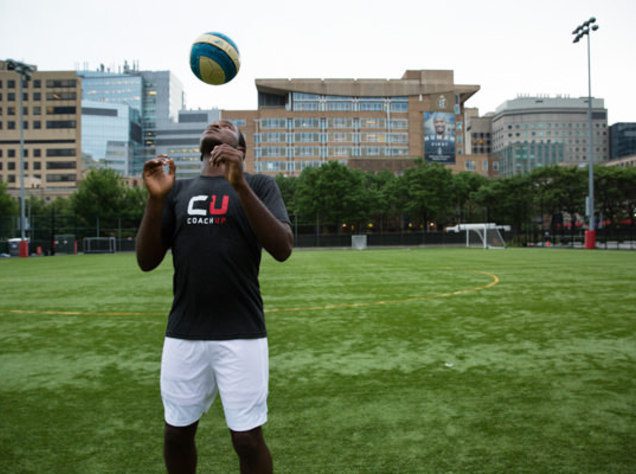The Importance Of Holding Possession
Ready or not, it’s time for all US Youth teams and systems to change and progress. As evidenced by soccer on our highest stage against the rest of the world’s success, we’re clearly not on par with the planet. It’s imperative to place more emphasis on possession and short passing, keeping the ball staying on the ground as much as possible. There are two main styles of play in the world — possession versus direct. The direct style showcases athleticism, speed, and power — and, of course, it should come as no surprise that it’s the States’ go-to method of choice. This is a much more risk-free style, combining a run-and-gun style with a smash-and-grab approach.
On the other hand, possession style teams require advanced ball control and decision making — anything less than that will result in a turnover. Many coaches believe possession style to be crucial in development, but once they’re tested with a turnover in their defensive third, the strategy becomes a costly one. Players and coaches begin to get quickly discouraged from possession style strategies and look to push back in a hurry for an equalizer.
However, when this happens, players need to be encouraged to stay the course and feed the overall goal of player development, instead of abandoning the style of play just to get a result. When possession is the focus in the youth system, players become superior in ball control, composure, and decision-making in their later years.

The Focus
The goal needs be an encouragement of an offensive style of play that includes keeping possession and promoting quick movement of the ball. Coaches should instruct their players to avoid over-dribbling at all costs. While positions are taught, players will be expected to look for spaces and movements to support forward when attacking by moving away from their original positions.
Parents and coaches often talk about what a team’s best formation should be, but it’s all situational. In fact, every team differentiates based on its personnel — even including what the coach is comfortable with. For developing teams, it’s incredibly important that all 11v11 formations should utilize at least four defensive players. Many of the greatest European teams adhere to this style of play, from the superior national-level squads all the way down to the best youth academy teams in England and Spain. The possession model encourages the ability to play the ball out from the back with short passes rather than long, lofted balls.
The longer your team holds possession, the less opportunity the other team has to score, simply put.
Key Points
- Three touches maximum
- Keep the game simple
- Keep the ball on the ground
- Focus on the accuracy and quality of the pass
- First touch into space
- Perception and Awareness
- Focus on 1v1 situations
Taking those points into consideration, watch this goal scored by Arsenal after a beautiful possession of build-up. Watch carefully as they ignore the desire to just boot the ball down field and chase it. Instead, they let the game come to them, pass into space after one or two touches, make some great runs, and finish it off from a short distance.
Learn First, Win Later
A good coaching philosophy to adhere to is one used by Claudia Reyna: learn to play first, then learn to win later. Coaches should encourage the youngest players to string passes together and heap praise upon them when they are able to keep possession. Remember, for youth soccer players scoring goals isn’t always the answer.
Playing possession soccer will pay off in the long run, even if it doesn’t get results at the youngest levels. When players reach advanced or higher levels, the direct, long-ball approach will, to a certain extent, become ineffective. To a well-coached team, it’s a predictable strategy and a particularly futile one when the team no longer has a size advantage.
(Related: Read about developing your weak foot here.)
Huddle Up
Additionally, players should be developed at different positions. Letting a striker not only see but feel how a game develops in the midfield can go far towards an understanding of positioning and build-up play in the future. If a player has a good left foot, playing him at left midfielder in lieu of just left back can help him understand the benefit from stringing short passes together possession instead of just booting the ball out.
Letting players see the game from a different perspective helps them understand how the game works at a very basic level. Position fluidity is a trait that all the best teams have and allows a player to become more useful and deployable in a formation. Once youth soccer accepts possession play as a suitable solution, the quality of play in future generations will considerably improve. Boot and chase teaches younger athletes how to win, not how to play the game.
And for youth soccer, there is no greater distinction to learn.
How useful was this post?
Click on a star to rate it!
Average rating 3.6 / 5. Vote count: 7
No votes so far! Be the first to rate this post.


